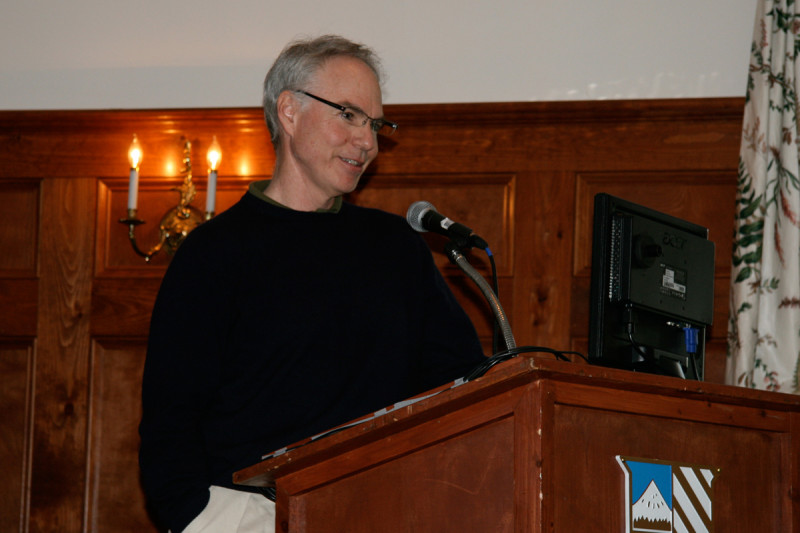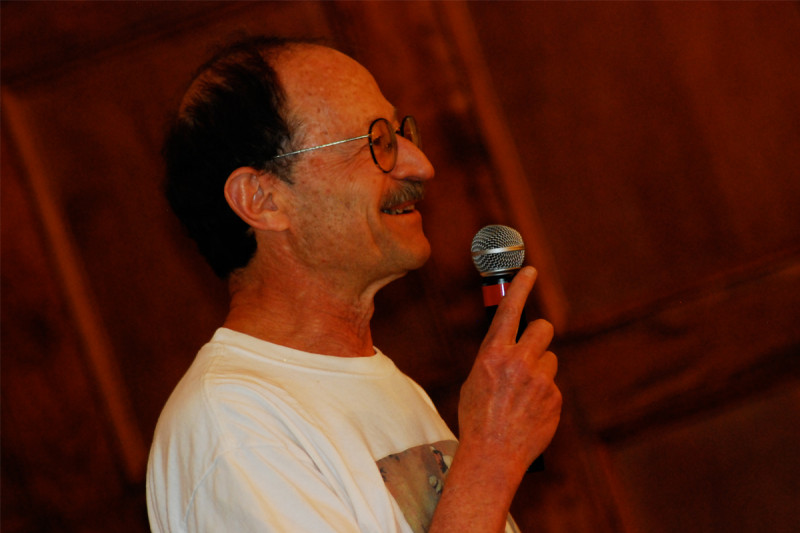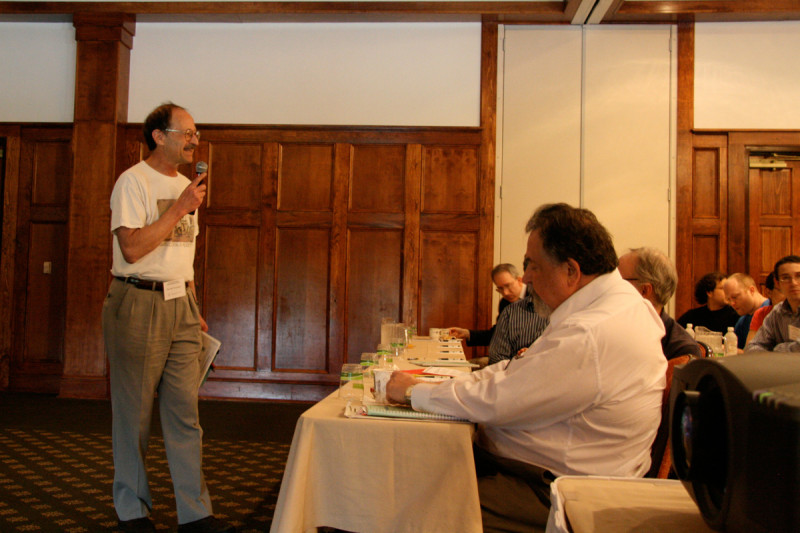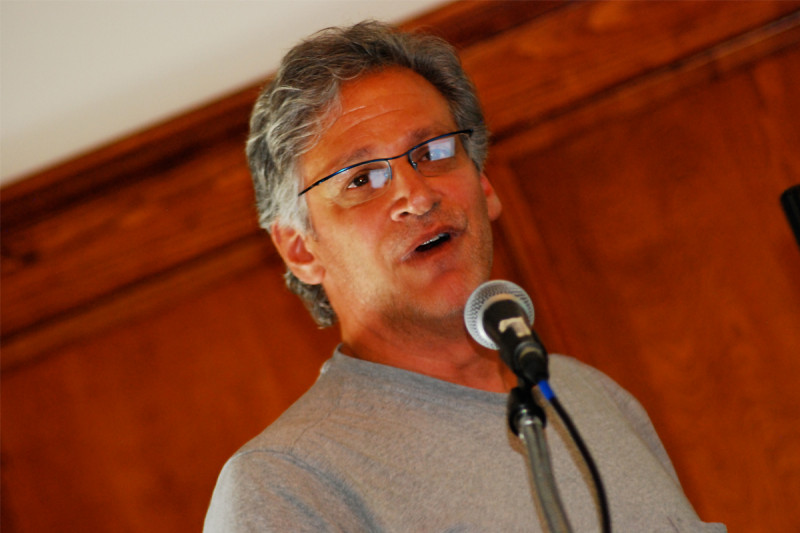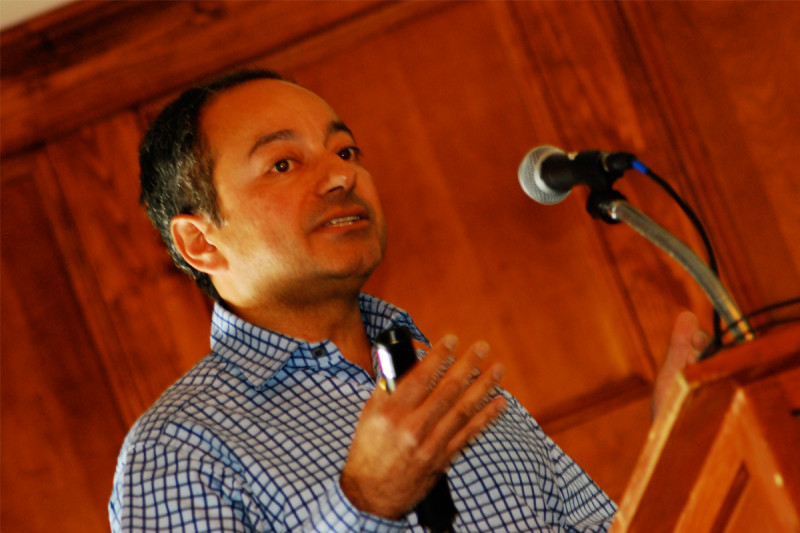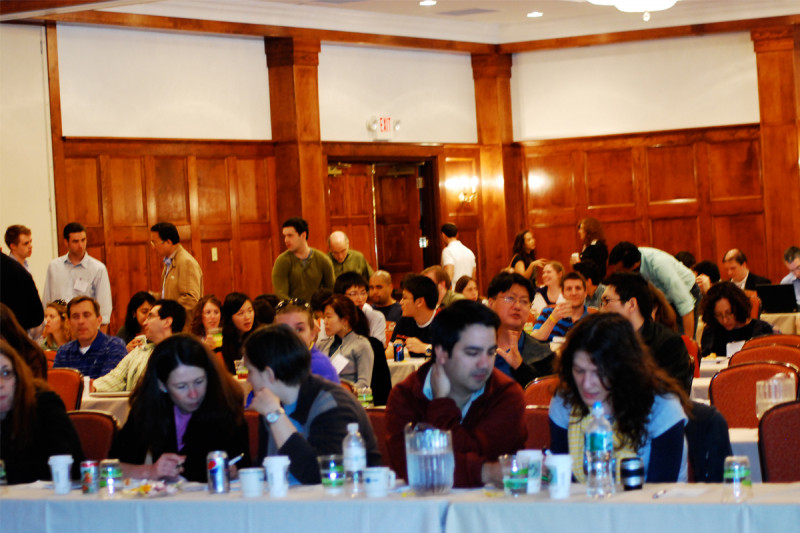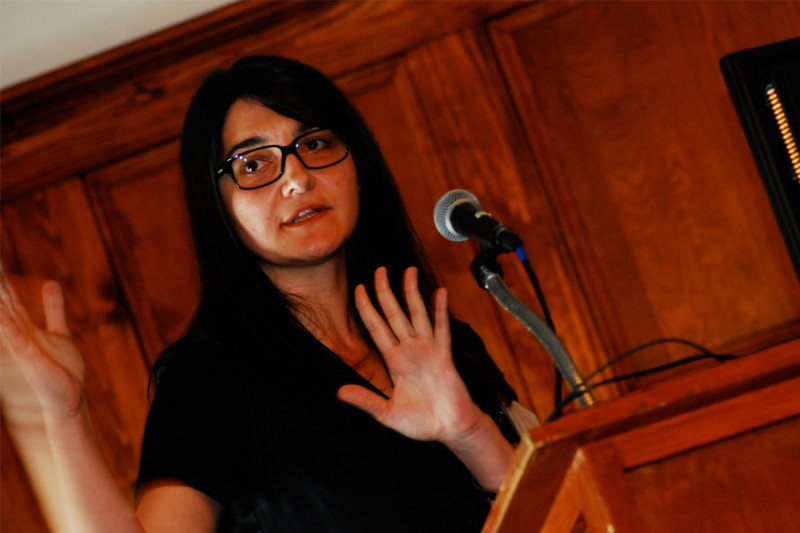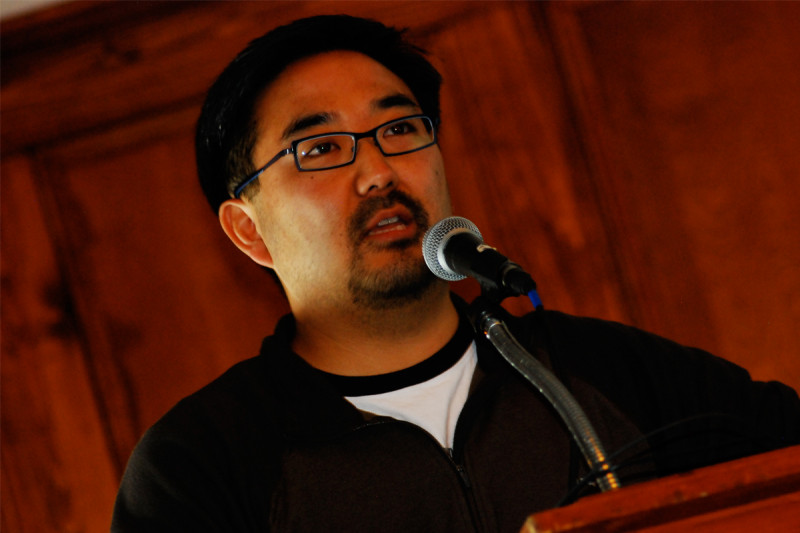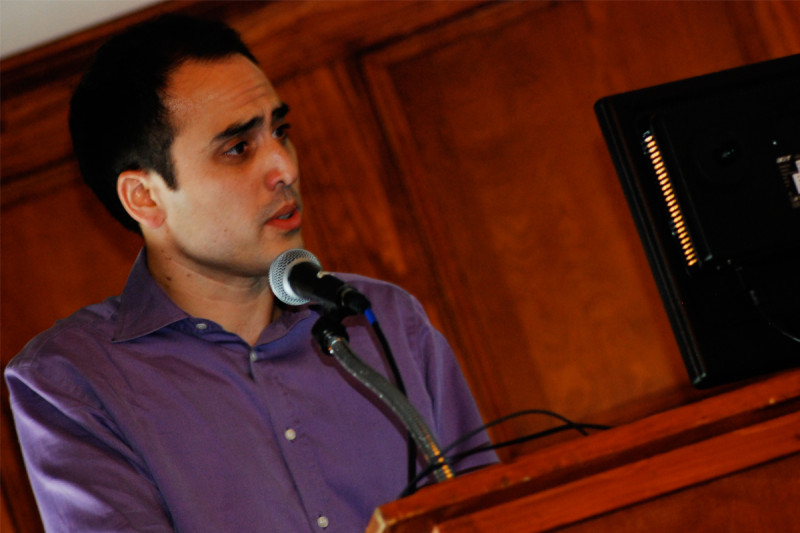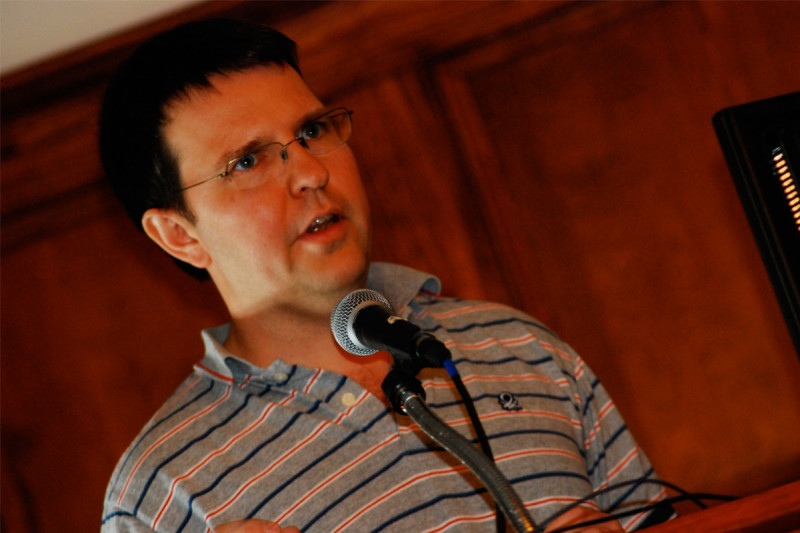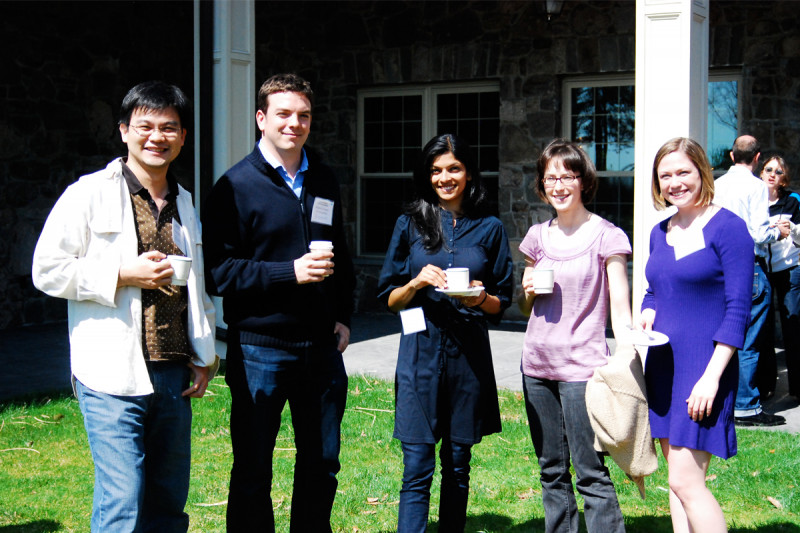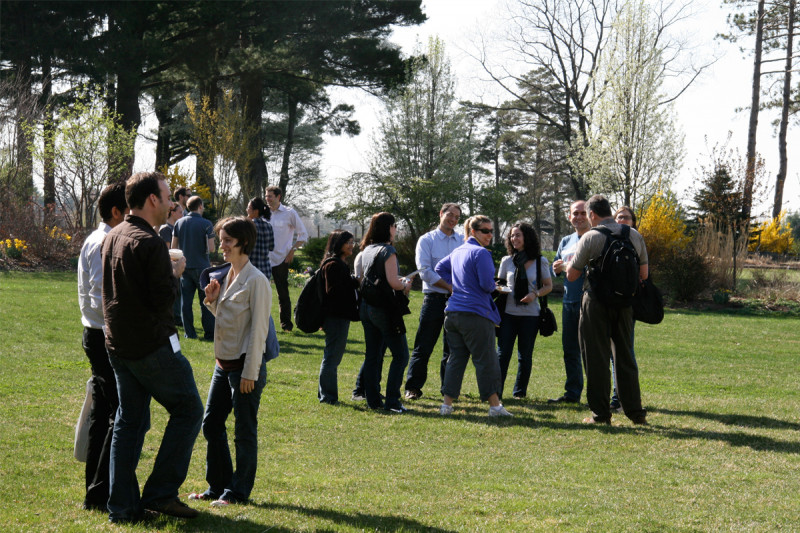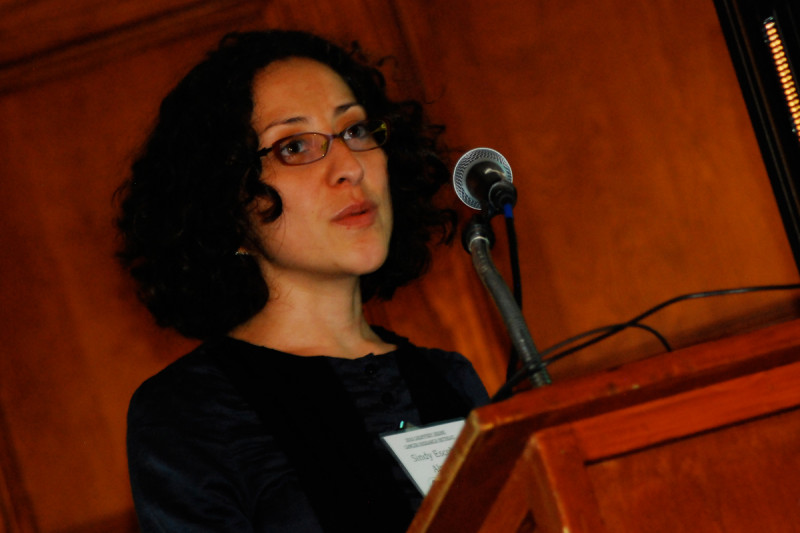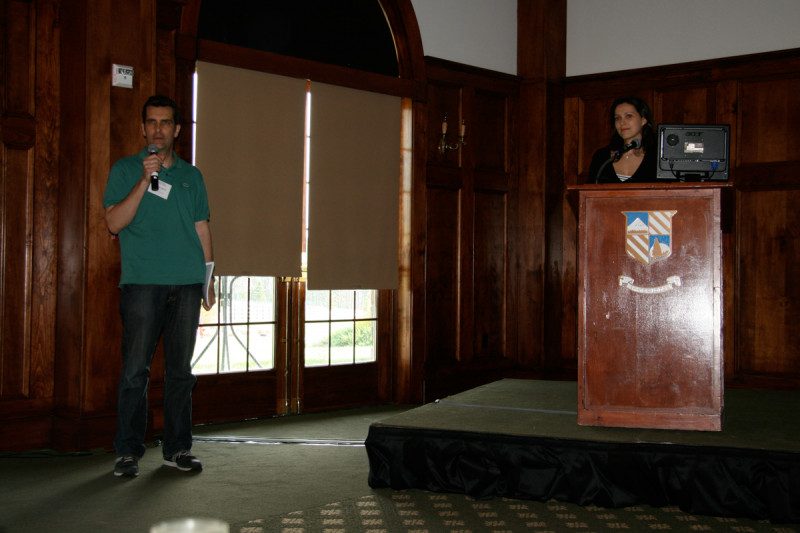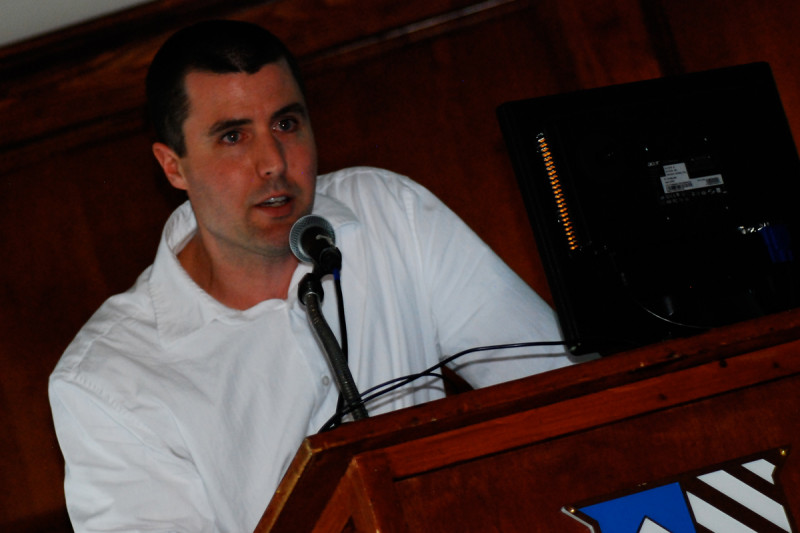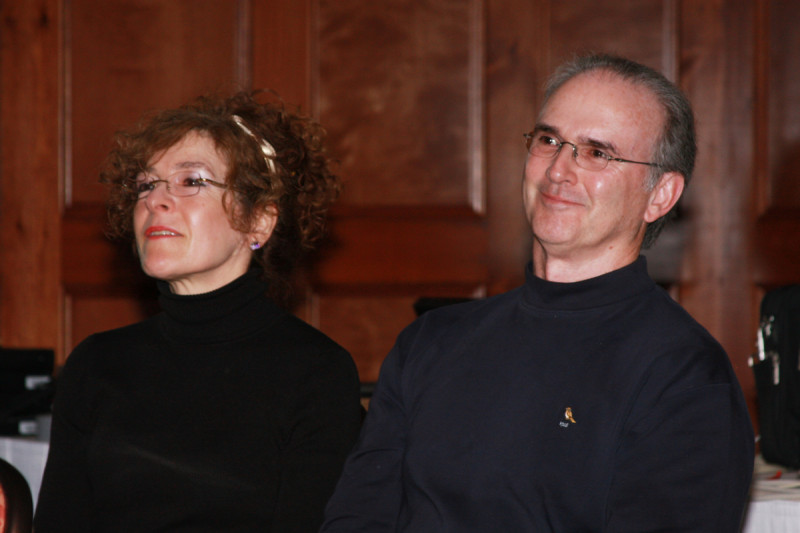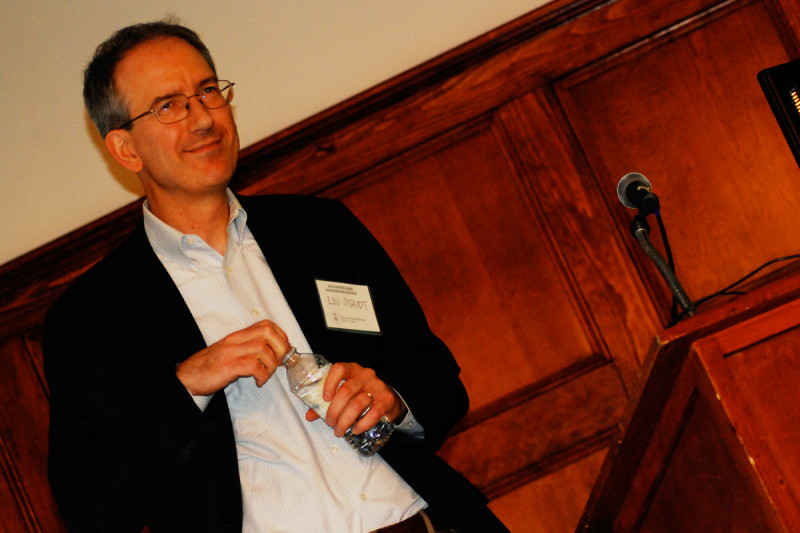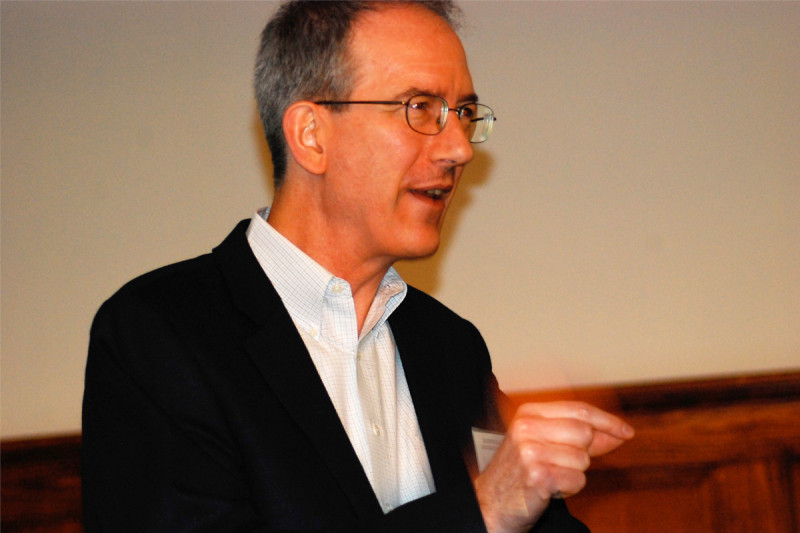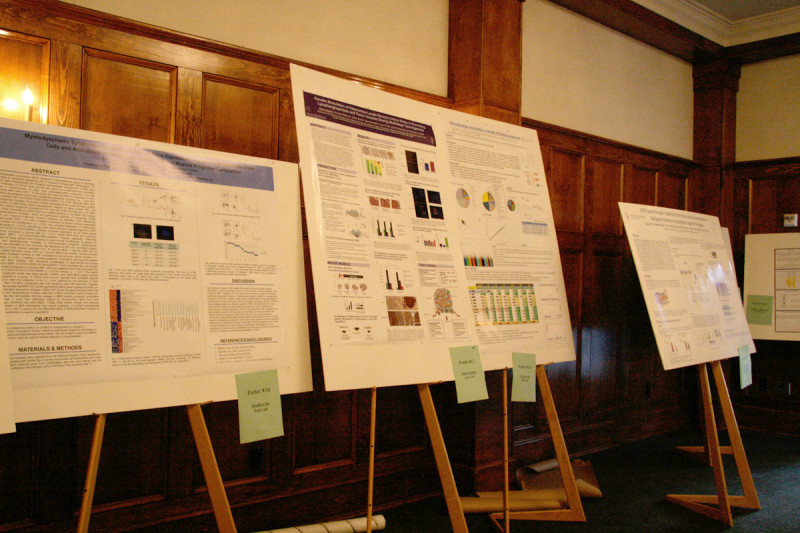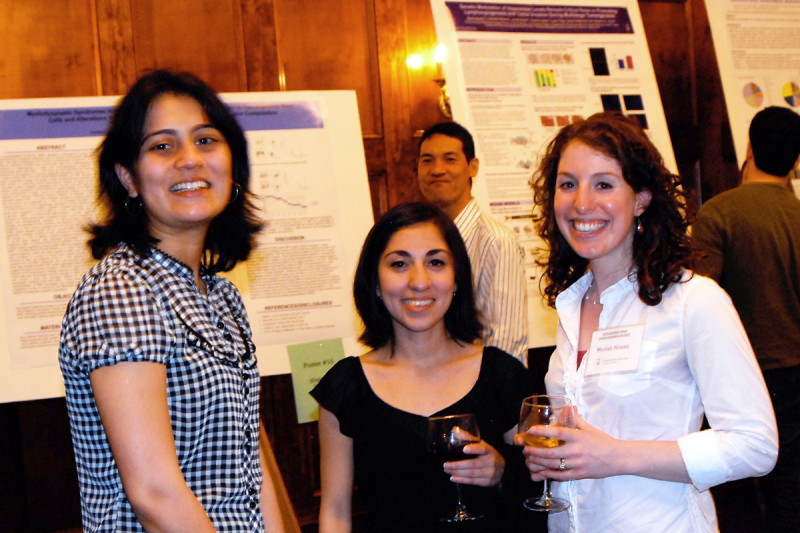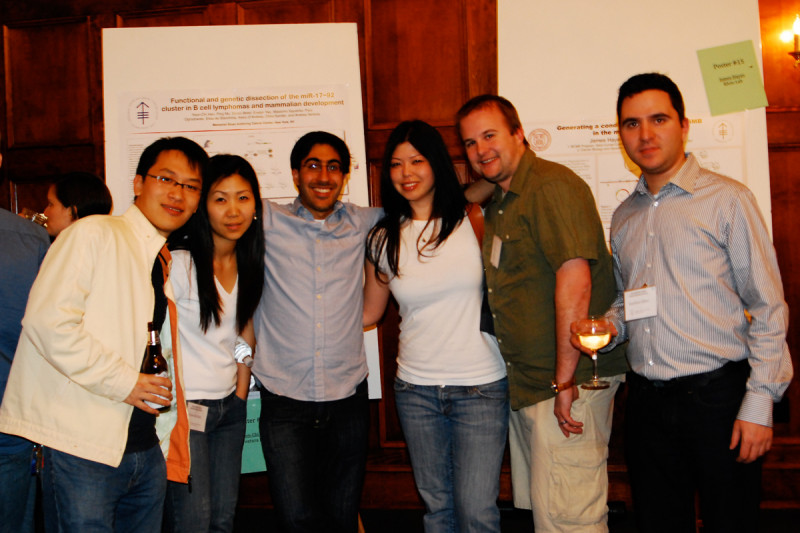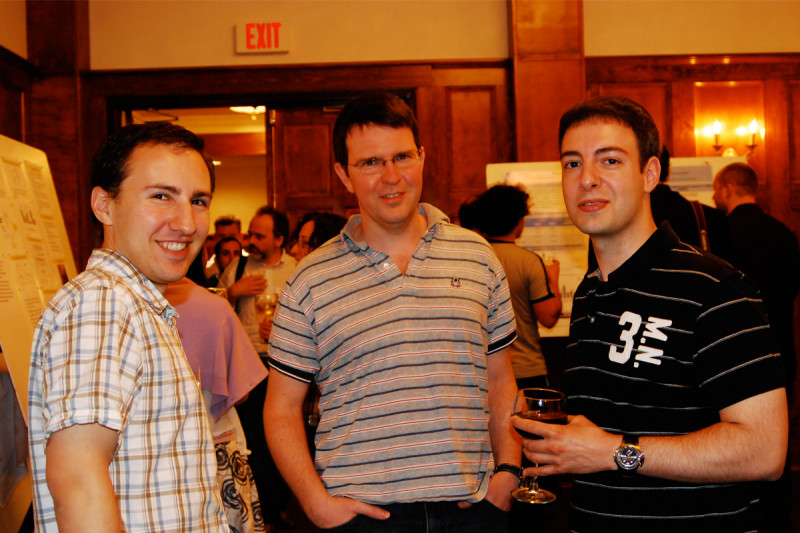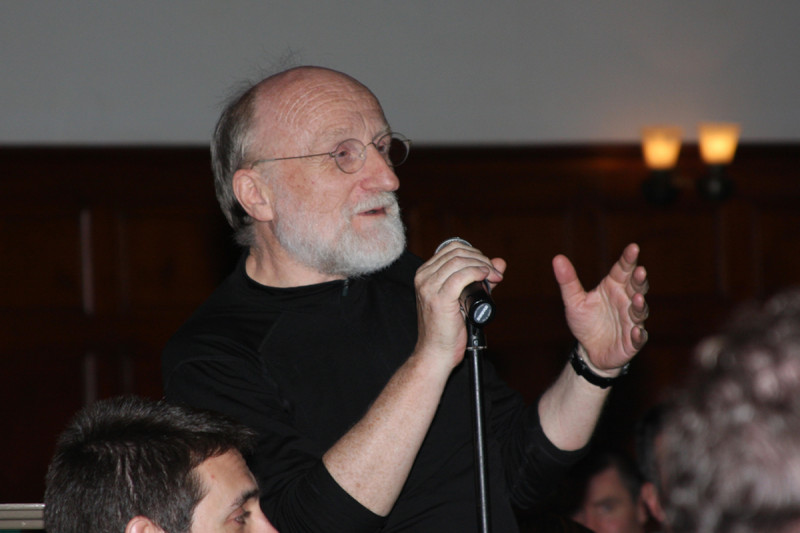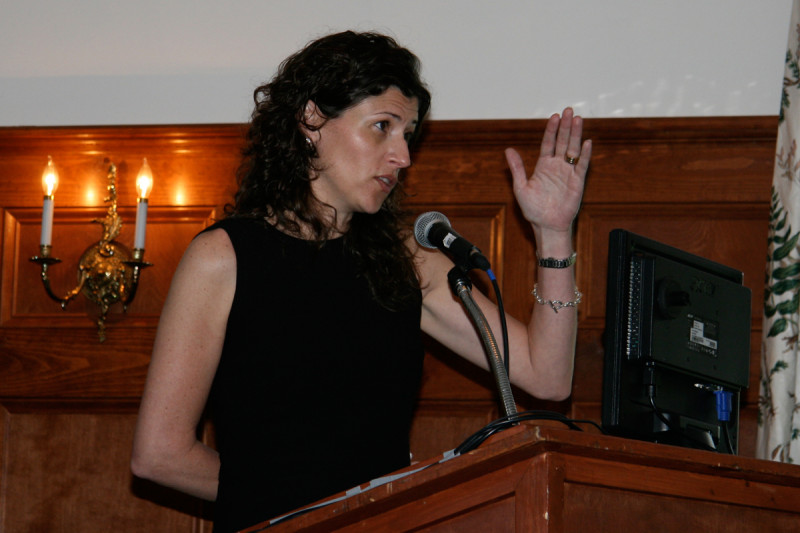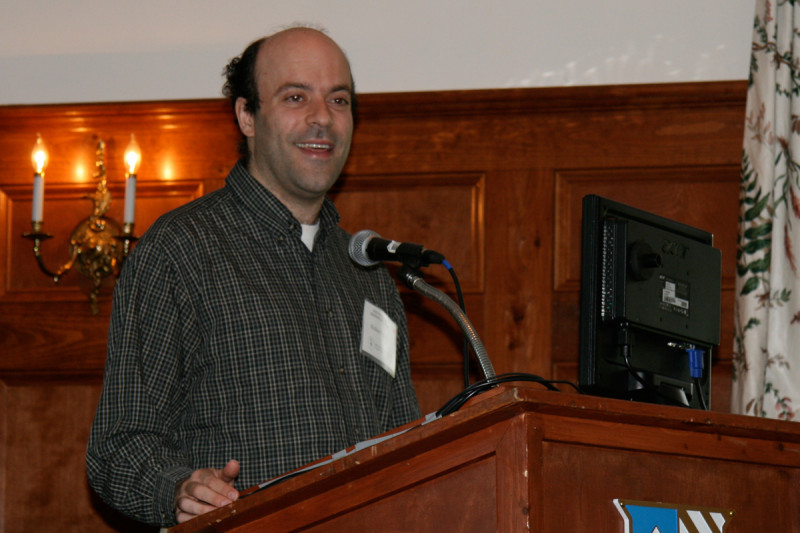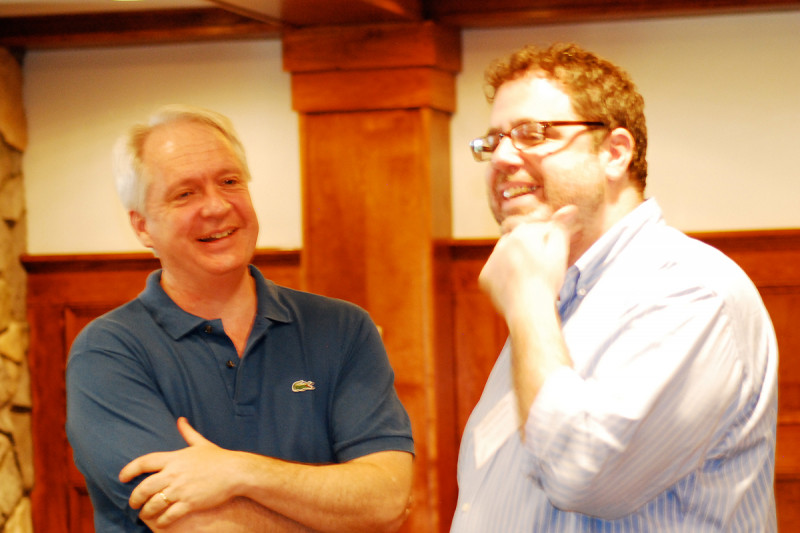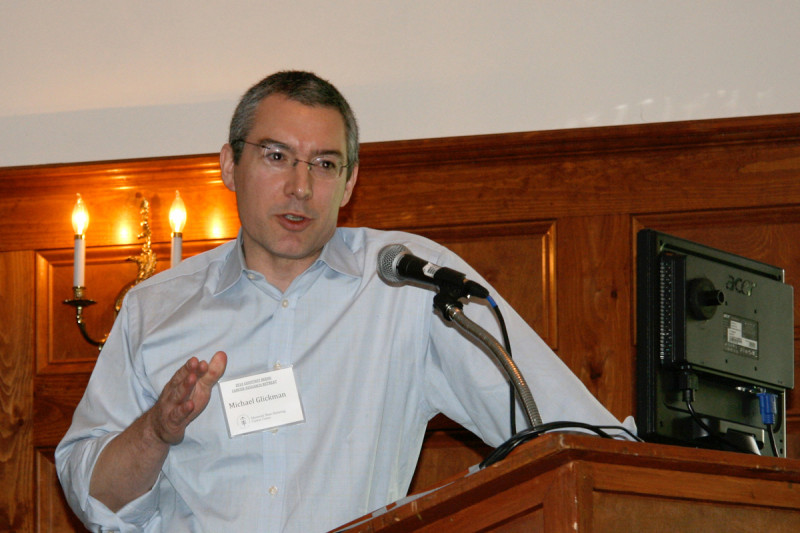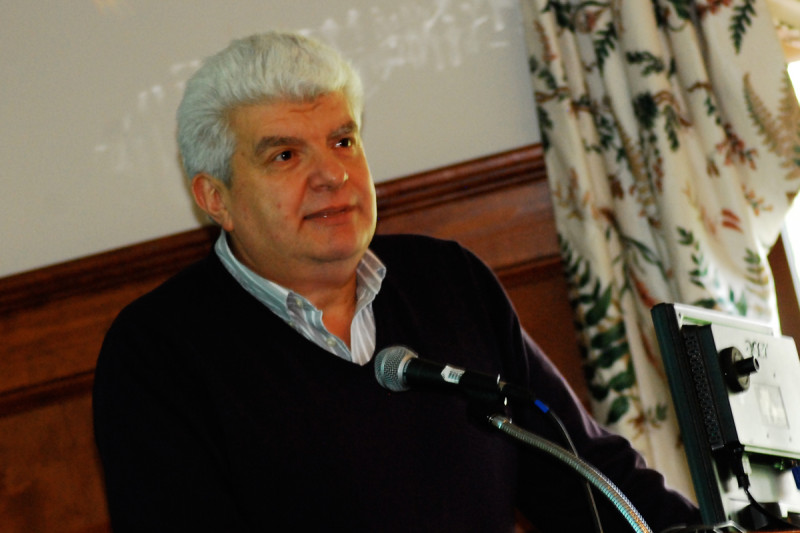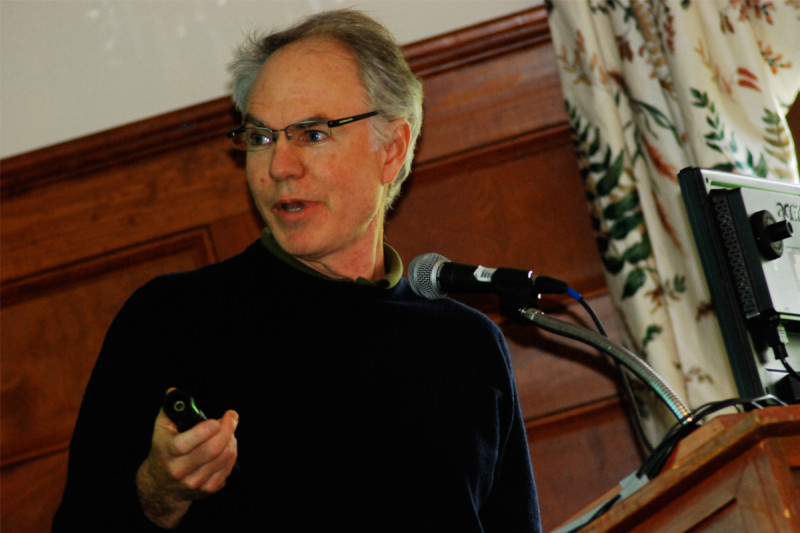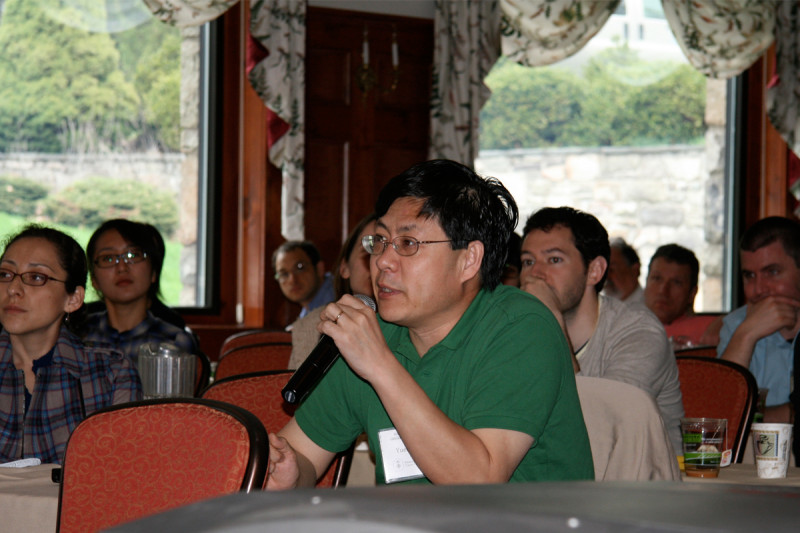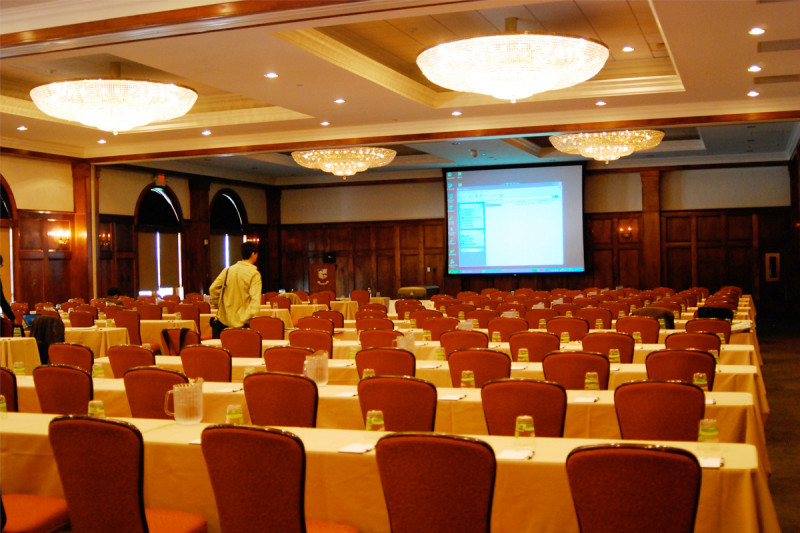On April 8 and 9, 2010, the Geoffrey Beene Cancer Research Center held its third annual retreat at Skytop Lodge in Pennsylvania. The agenda focused on a wide range of topics related to translational research in oncology, a field that is at the core of the Beene Center’s mission. Attendees included lab members in the Cancer Biology and Genetics Program (CBG) within the Sloan Kettering Institute and the Human Oncology and Pathogenesis Program (HOPP) within Memorial Hospital, as well as senior faculty within the Memorial Sloan Kettering.
Then Memorial Sloan Kettering Cancer Center President Harold Varmus kicked off the retreat on Thursday with opening remarks. He recognized G. Thompson Hutton, Trustee of the Geoffrey Beene Foundation, for his vital role in the creation and continued support of the Beene Center at Memorial Sloan Kettering. His introduction was followed by presentations from Beene grant recipients Cameron Brennan, James Fagin, Filippo Giancotti, Michael Glickman, Tari King, Robert Klein, and Michael Overholtzer. For the first time, this year’s retreat also featured lectures by two Beene graduate-student fellowship awardees, Sindy Escobar-Alvarez and Vasilena Gocheva.
HOPP and CBG faculty members Robert Benezra, Jason Huse, Joan Massagué, Christine Mayr, Christopher Park, Charles Sawyers, and Hans Guido Wendel also presented on the topics of tumor invasion and metastasis, tumor initiation by microRNAs, and approaches to targeting aberrant signal transduction. Lou Staudt gave a feature talk titled “RNAi Screening and Cancer Gene Resequencing for the Achilles Heel of Cancer.” Dr. Staudt is Deputy Chief of the Metabolism Branch at the National Cancer Institute, and he also co-directs the Lymphoma/Leukemia Molecular Profiling Project (LLMPP), a multi-institutional consortium that aims to develop a new molecular framework for the diagnosis of all lymphoid malignancies.
The cocktail hour/poster session included 41 poster presentations by trainees. This year, research fellows/scholars and faculty members judged the posters and presented awards to the top five posters. Awardees included Nikki Charles from Eric Holland’s lab, Semanti Mukherjee and Jason Willis from Robert Klein’s lab, Praveen Raju from Beene grant recipient Alexandra Joyner’s lab, and Tanya Shree from Johanna Joyce’s lab. See a complete list of poster awardees and abstracts below.
The annual retreat continues to be the Beene Center’s most successful event due to the enthusiastic participation of the various departments throughout Memorial Sloan Kettering, emphasizing the importance of translational research in both the clinical and lab environments. The Beene Center has new initiatives underway to encourage interactions among clinicians and basic scientists and plans to continue its endeavors to strengthen the translational programs at Memorial Sloan Kettering.
Poster Awardees and Abstracts

Nikki Charles
Perivascular Nitric Oxide Activates Notch Signaling and Promotes Stem-Like Character in PDGF-induced Glioma Cells
Nikki Charles, Tatsuya Ozawa, Massimo Squatrito, Anne-Marie Bleau, Cameron W. Brennan, Dolores Hambardzumyan, and Eric C. Holland
eNOS expression is elevated in human glioblastomas and correlated with increased tumor growth and aggressive character. We have identified a novel role for nitric oxide (NO), which is produced from eNOS in the tumor vasculature and promotes stem-cell-like characteristics in glioblastomas. By activating the Notch signaling pathway in a population of stem-like cells residing in the microvascular environment of a subset of gliomas, we demonstrate that nitric oxide accelerates glioma progression and shortens the survival of mice.

Semanti Mukherjee
Evaluating Statistical Power of Shared Controls in Genome-Wide Association Studies
Semanti Mukherjee and Robert J. Klein
Genome-wide association (GWA) studies have become the method of choice for identifying genetic variants associated with specific diseases. In shared control study design, a common group of healthy individuals are used as controls for multiple diseases. We evaluated the idea of using genotype data of controls from publicly available sources as shared controls in our GWA study. We observed that the analytical power of a GWA study increases with increasing number of cases, genotype relative risk, disease allele frequency, and case:control ratio. The maximum power reaches at 1:10 ratio of cases and controls. We analyzed pancreatic cancer cases genotyped in-house with shared controls from publicly available sources. To correct for population stratification resulting from combining data, we used principal component analysis (PCA). Our simulated studies demonstrate that the PCA-corrected method significantly lowers the false-positive rate. We found that in real datasets, PCA can reduce the inflation of test statistics effectively. The performance of four known disease loci associated with pancreatic cancer improved in our dataset as we increased case:control ratio by adding shared controls. Thus, we reported a systematic method for using shared controls that will substantially lower time and cost of GWA studies.

Praveen Raju
Genetic Inducible Mosaic Analysis (GIMA): A Novel Genetic Method for Modeling and Characterizing Sporadic Tumorigenesis in the Mouse
Praveen Raju, Zhimin Lao, Luis Barraza, Brian Bai, and Alexandra L. Joyner
Cancer arises sporadically from one or a few cells within a tissue that acquire a number of critical genetic changes. However, current animal models of cancer do not accurately model sporadic tumor formation. Using sophisticated mouse genetics, we are developing a novel approach to study the natural progression of sporadic tumors and test cancer treatments.
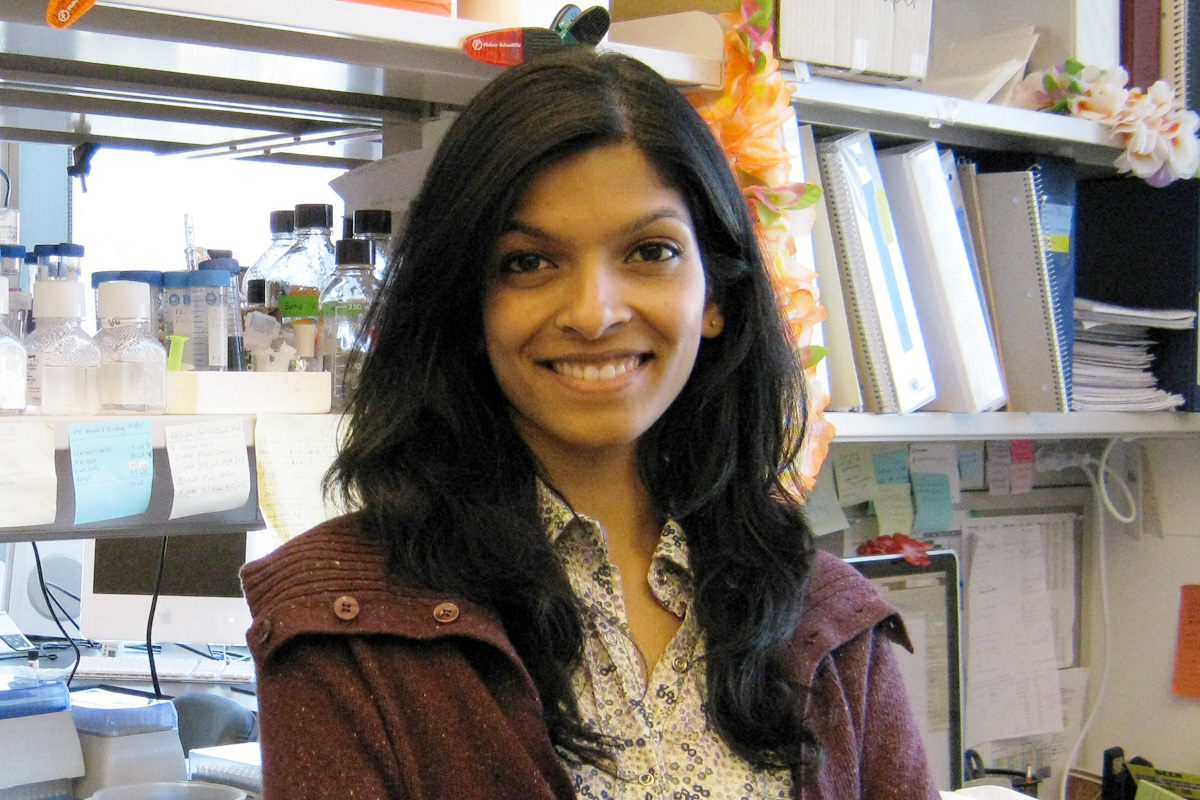
Tanaya Shree
Inhibition of Cysteine Cathepsin Proteases Enhances Effects of Chemotherapy in Reducing Primary and Metastatic Breast Cancer Progression
Tanaya Shree, Benelita T. Elie, Alfred Garfall, Katherine Bell-McGuinn, Kenishana Simpson, Violetta Barbashina, and Johanna A. Joyce
The tissue environment in which tumors arise and grow can profoundly influence the trajectory of those tumors; namely, how aggressive they can become and even whether or not they metastasize. Recent studies suggest that a tumor’s environment can also influence how it responds to treatment. In our studies of breast cancer, we have found that enzymes called cathepsins are increased when tumors are treated with chemotherapy, and that inhibiting these enzymes while giving chemotherapy greatly enhances antitumor effects of the chemotherapy. Thus, these enzymes may be involved in helping tumors recover from chemotherapy and regrow, and inhibiting them allows us to impair this process. Taking this strategy further, a triple-drug therapy we designed — targeting tumor blood vessels in addition to cathepsins while administering standard chemotherapy — was highly effective at reducing tumor growth in an animal model, and also significantly reduced lung metastases. Thus, we believe that targeting “normal” cells in the microenvironment of tumors in addition to our standard treatments targeting tumor cells will help us achieve maximum therapeutic benefit.
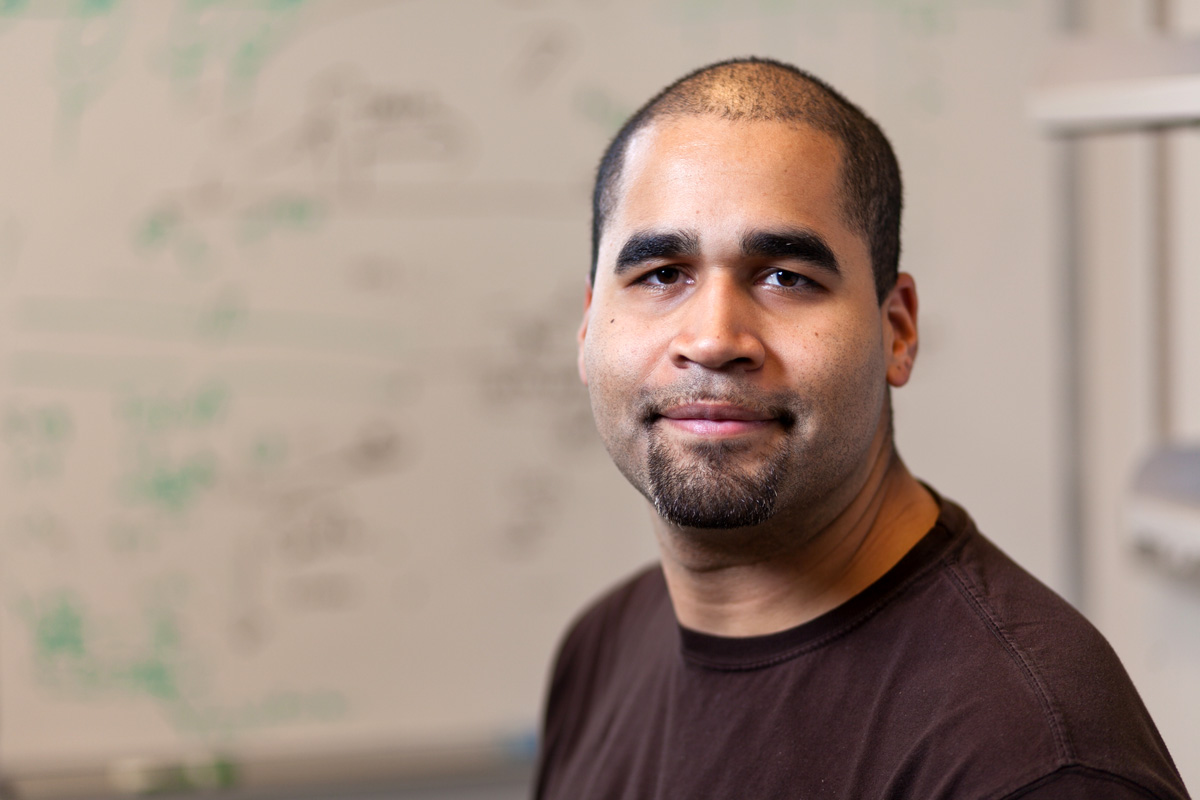
Jason A. Willis
Excess Germline Copy Number Variation Is Associated with Pancreatic Cancer Risk
Jason A. Willis, Sarah H. Olson, Robert C. Kurtz, and Robert J. Klein
The goal of our project is to locate inherited mutations in DNA that predispose some individuals to pancreatic cancer and influence their overall prognosis. The research is a collaborative effort between geneticists, statisticians, and physicians at Memorial Sloan Kettering Cancer Center. We hope that this project will lead to a better understanding of how pancreatic cancer arises and to the development of new therapies. The poster describes some of our preliminary findings. First, a certain type of inherited mutation (called copy number variation) is more common in patients who have multiple family members affected by pancreatic cancer. We are currently investigating how and why this type of mutation may lead to increased risk of cancer. Second, at least one previously undiscovered mutation seems to correlate with very poor survival from pancreatic cancer. We are confirming this result in a much larger study.
